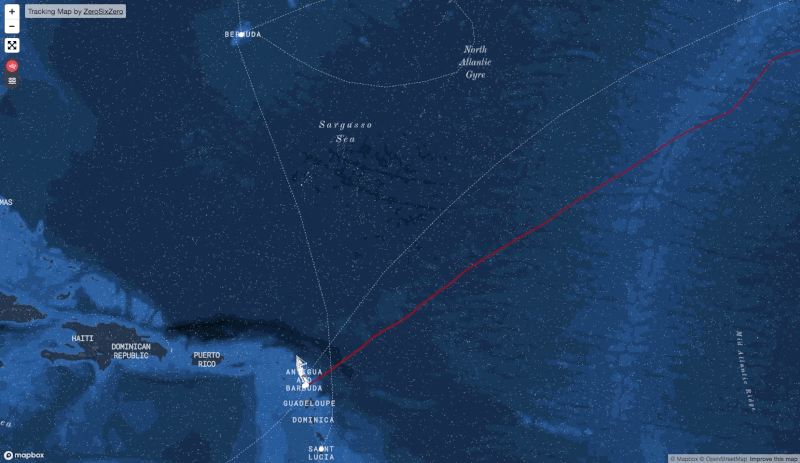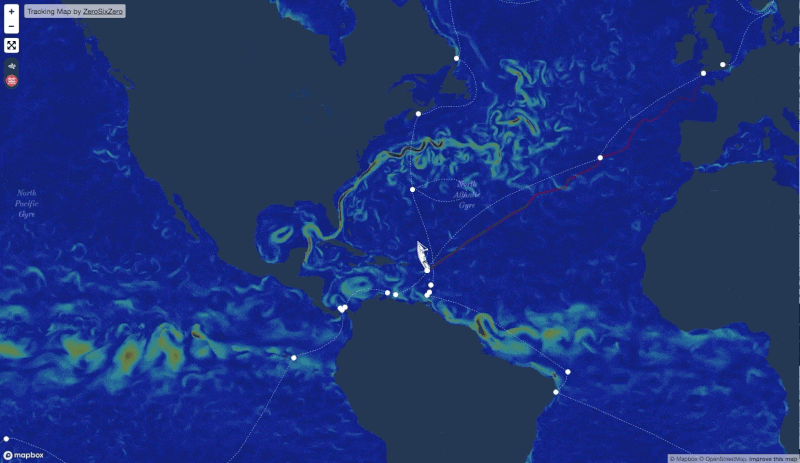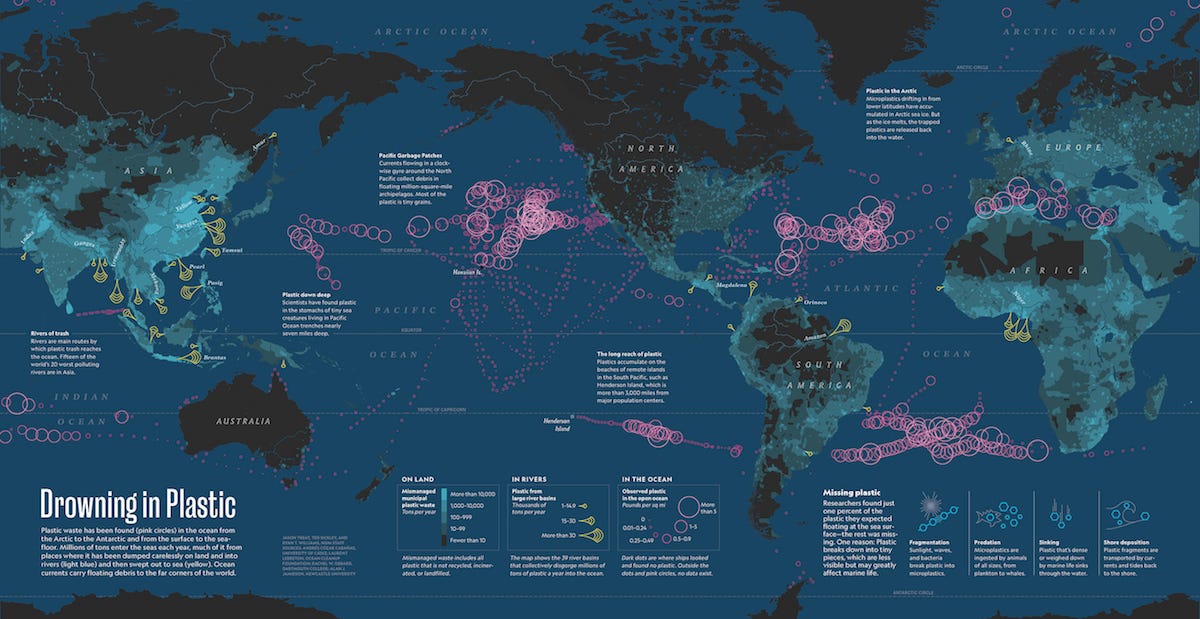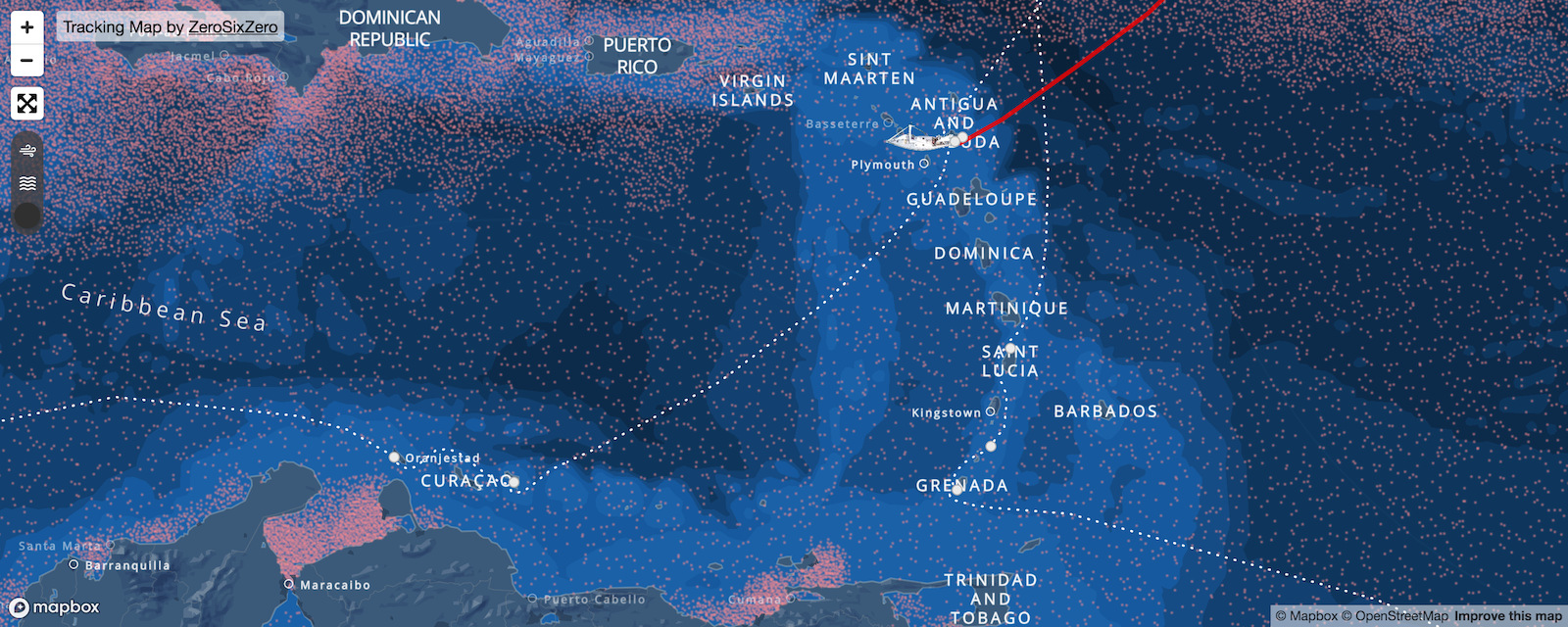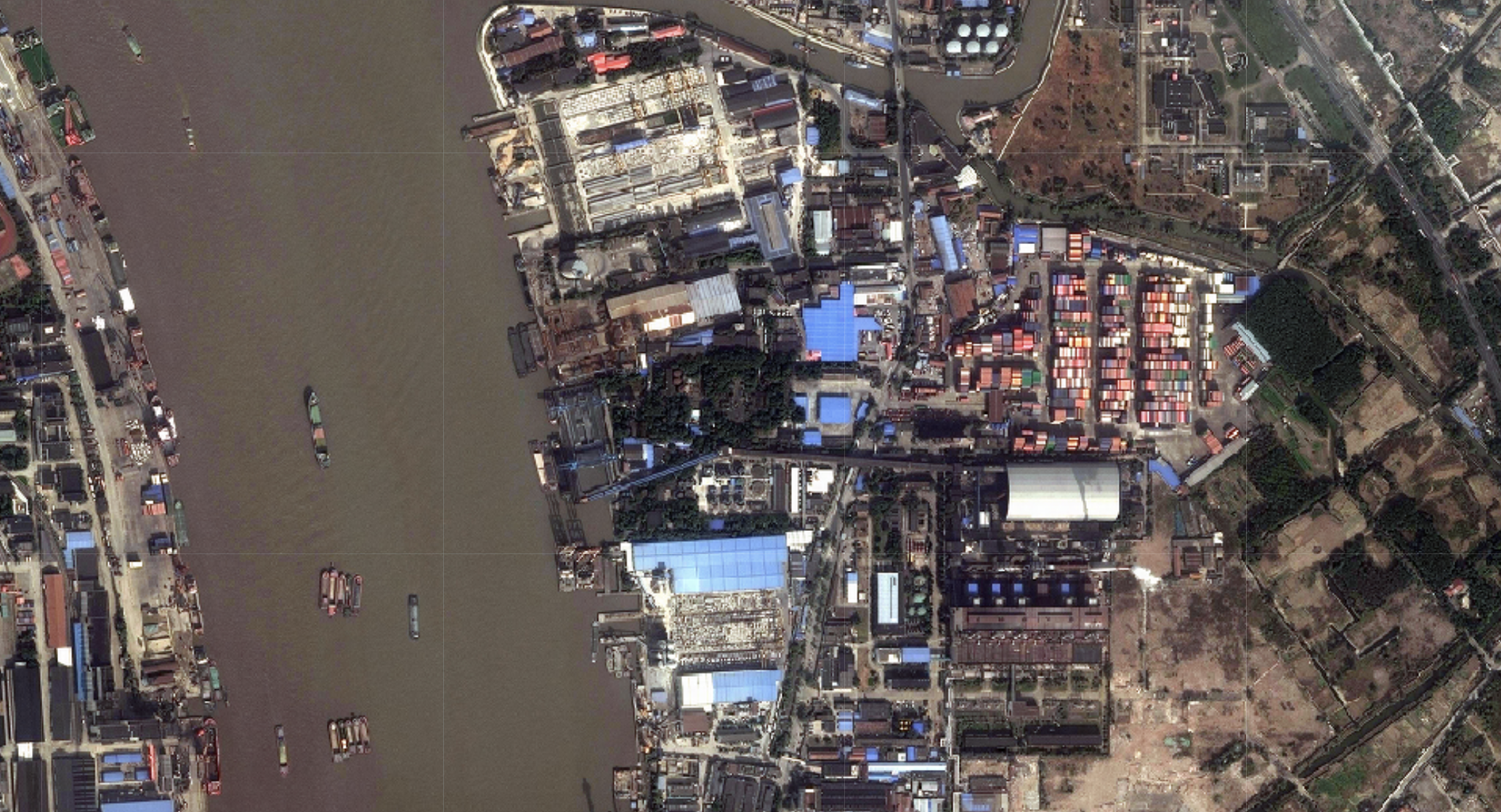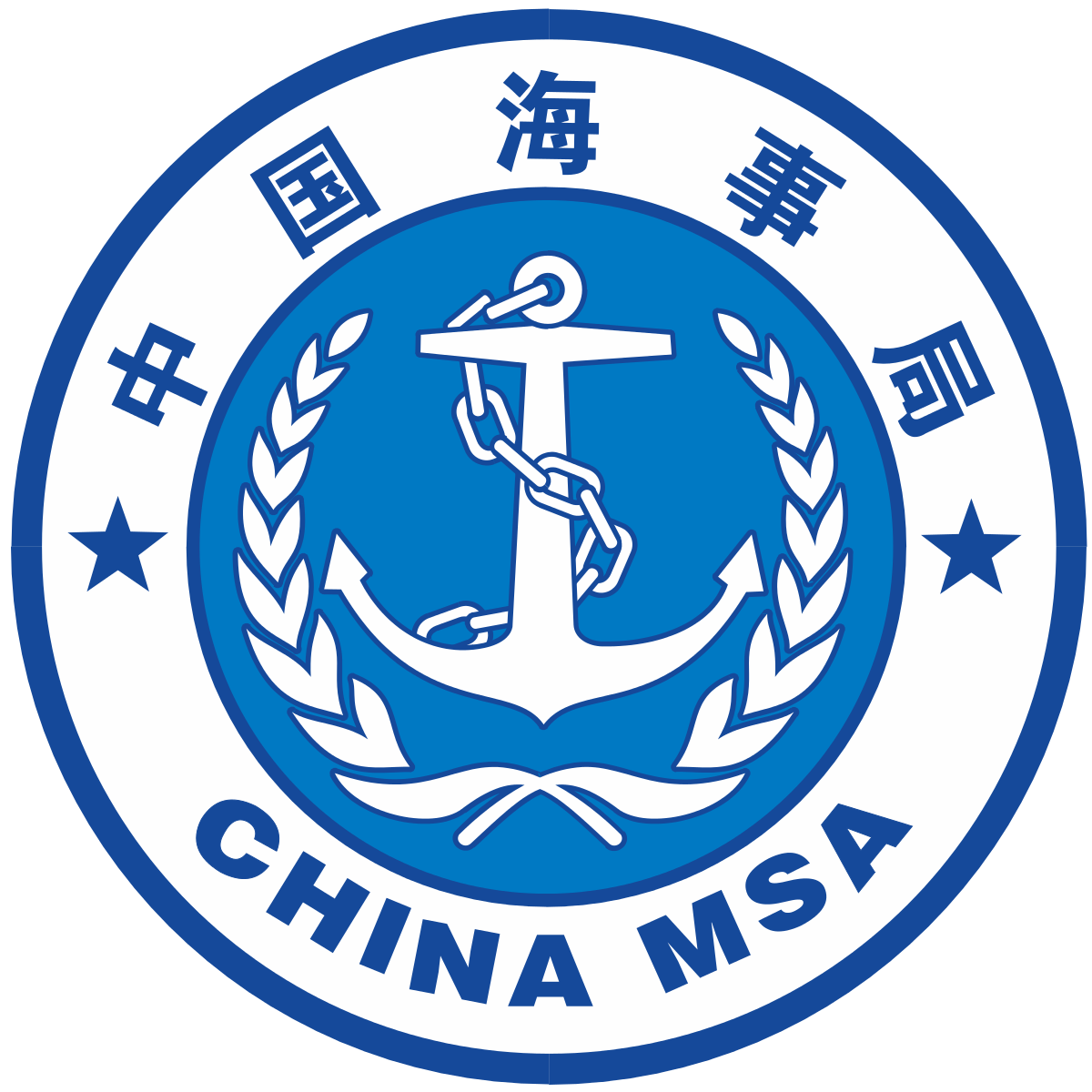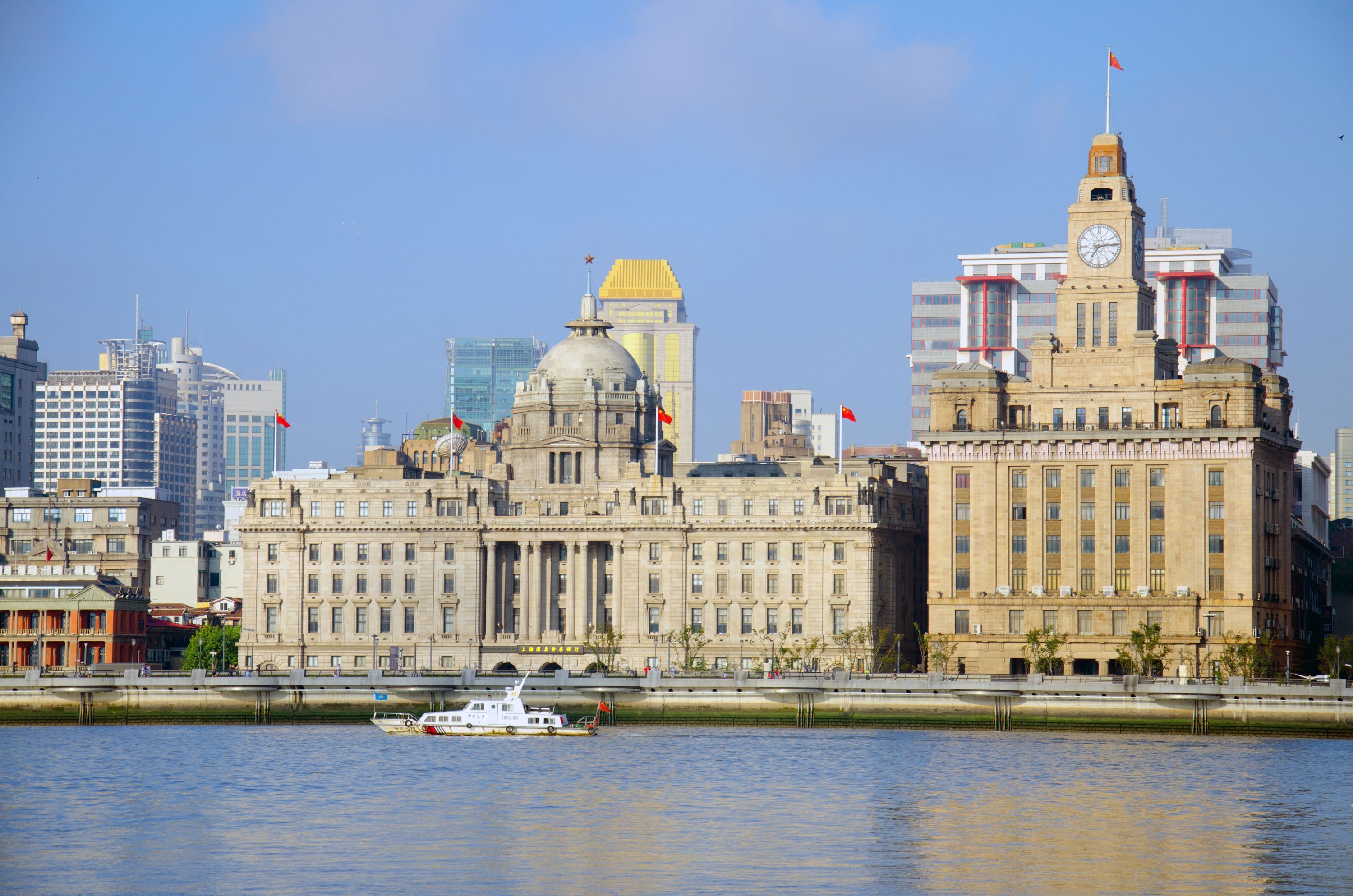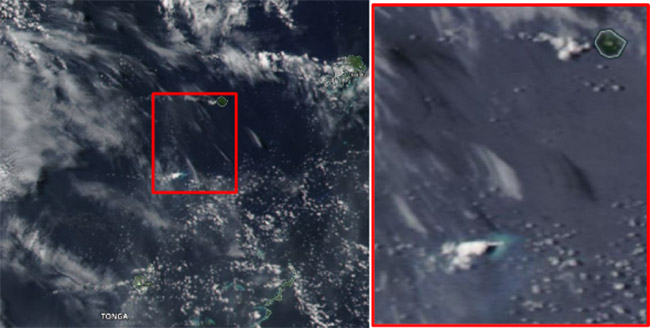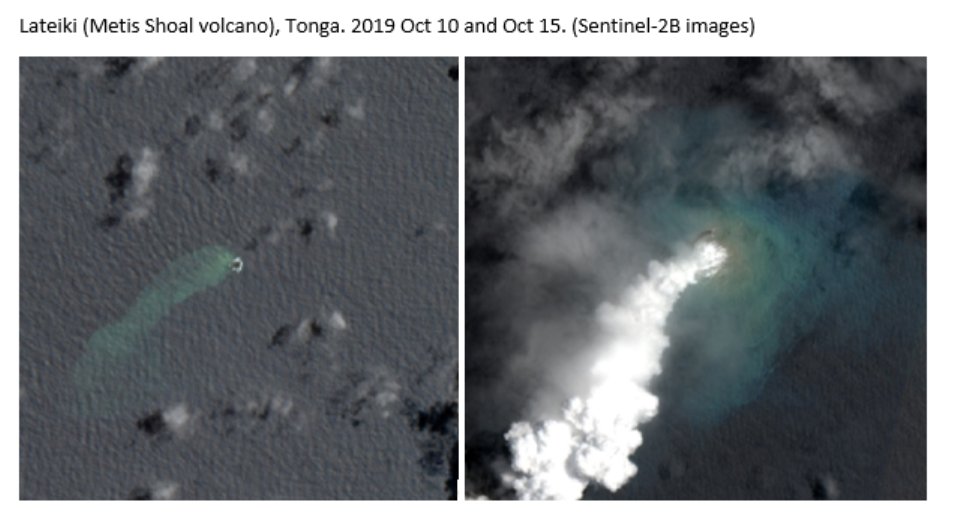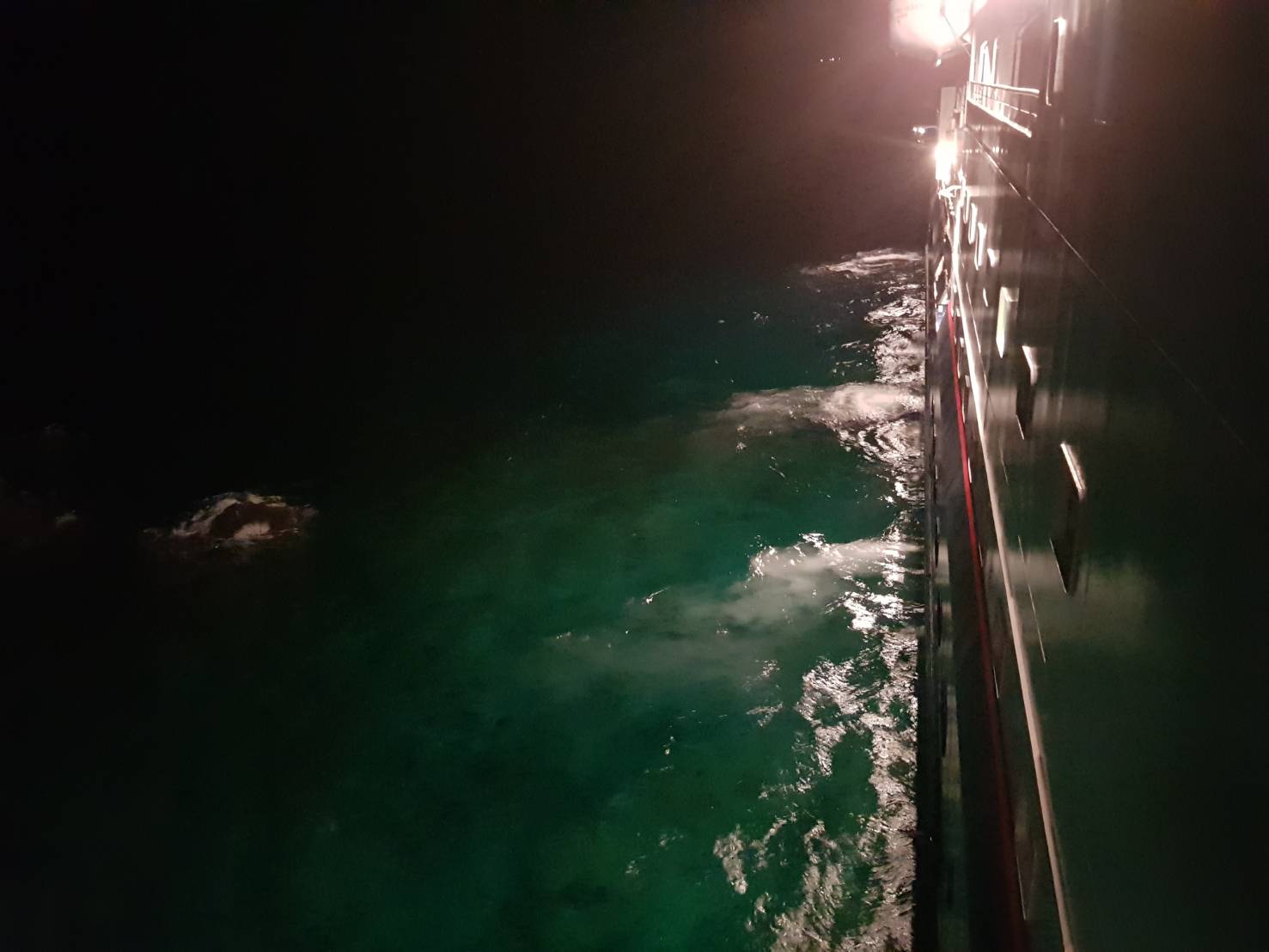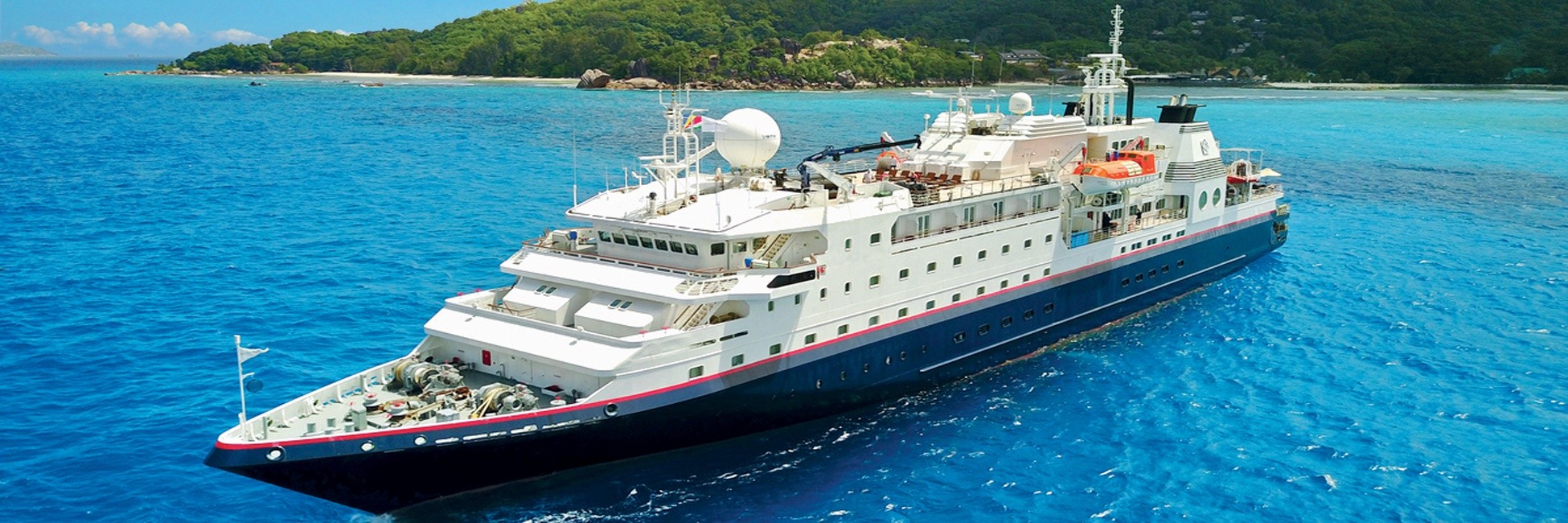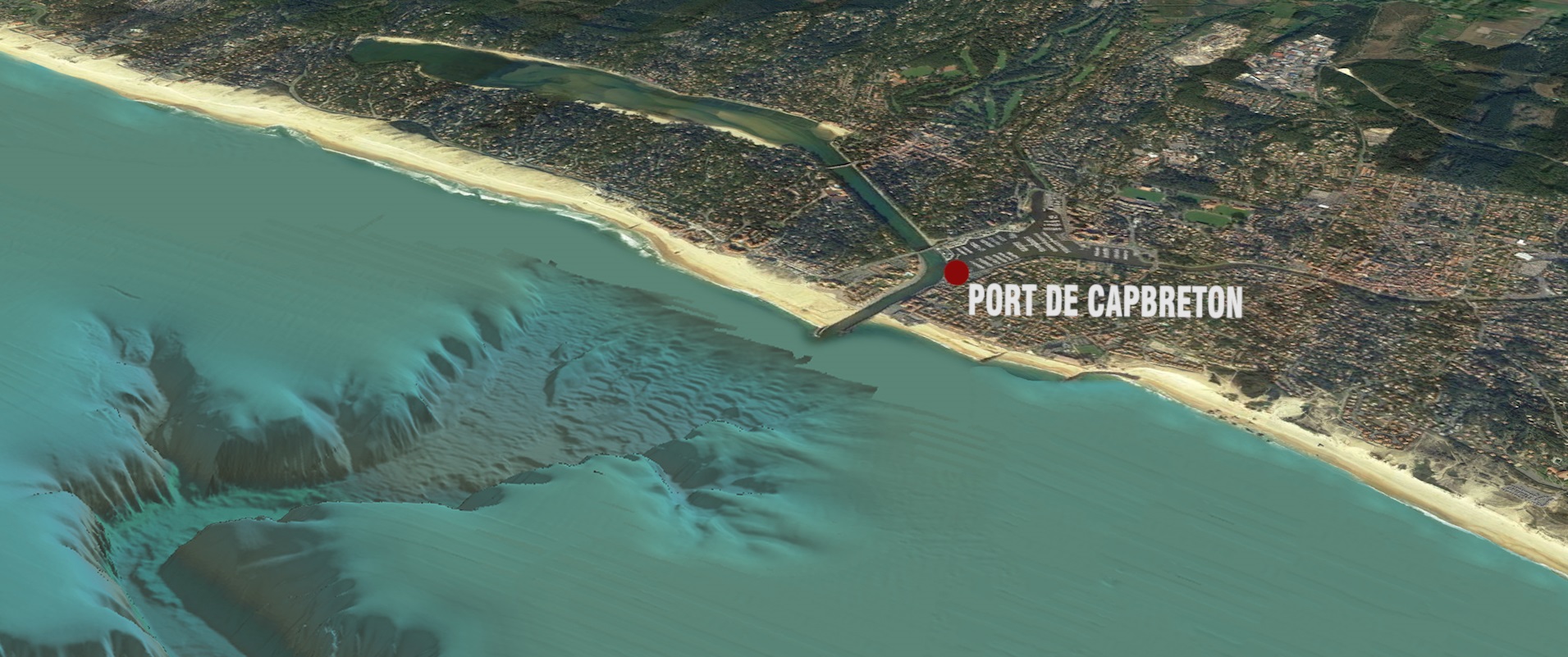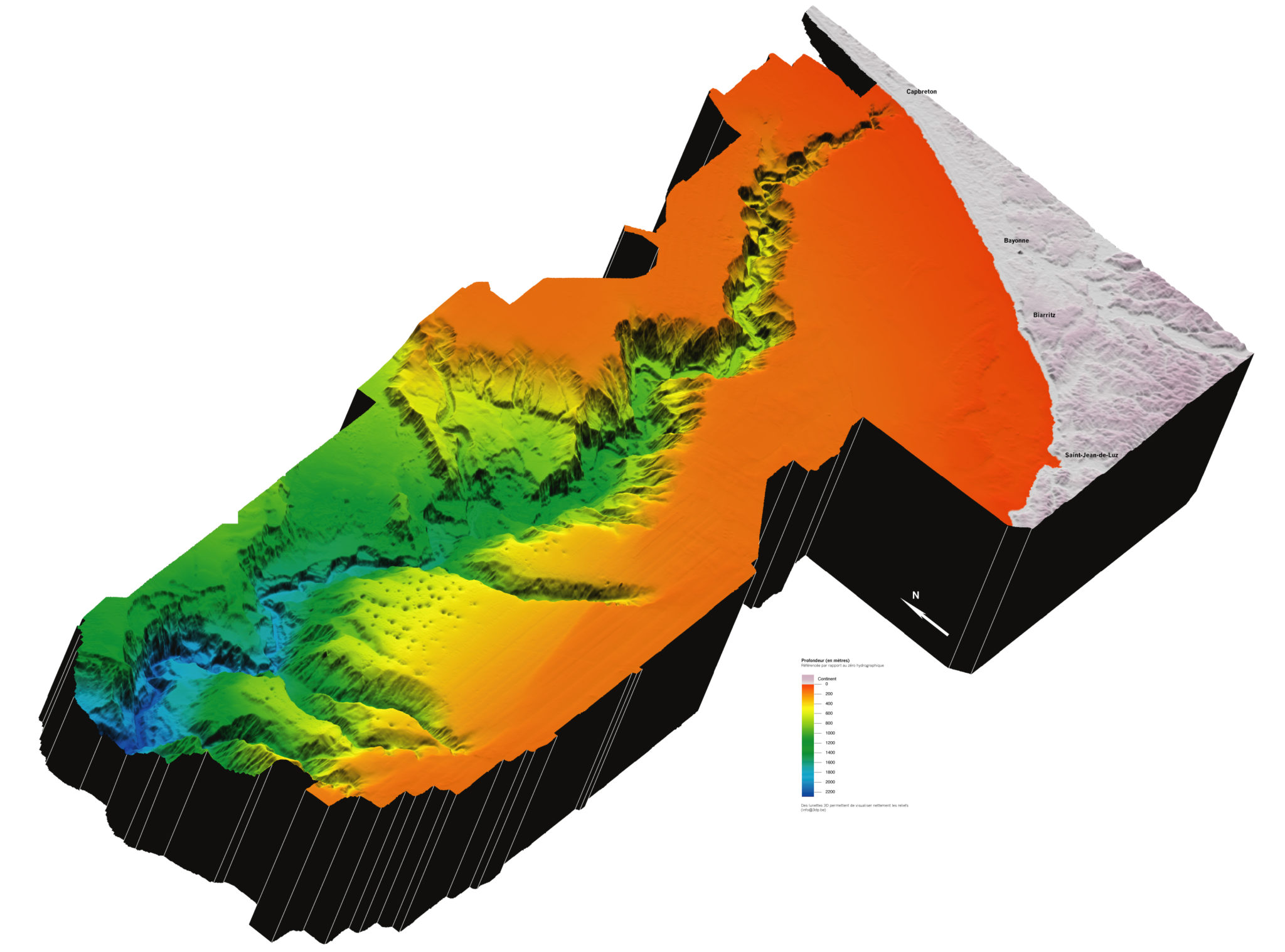Created by Copernicus Service and Mercator Ocean for eXXpedition's North Pacific 2018 voyages
From Mapbox by Marena Brinkhust
On Mapbox’s Community Team, I help organizations use location tools to approach environmental challenges in a lot of different ways — but I’ve never done anything like this:
This week, I’m traveling to Antigua where on Friday I’ll set sail for a week on Leg 4 of eXXpedition, a round-the-world sailing voyage to study and spur action on ocean plastic pollution.
Over two years, 300 women from around the world will sail sections of this journey, collectively circling the globe, gathering scientific data, and connecting with communities to turn the tide on plastic waste.
The world’s oceans hold an estimated 5,250 billion pieces of plastic with a combined weight of 268,940 tons.
While the problem isn’t visible to us every day, it affects all of us.
Pieces of plastics, and toxins like pesticides that attach to them, are ingested by marine organisms and travel up the food chain until they eventually end up inside our bodies.
This is especially concerning for women because of how chemicals like bisphenol-A (the backbone of many plastics) harm our reproductive systems.
By bringing together hundreds of women across disciplines — scientists, technologists, entrepreneurs, artists, and activists — eXXpedition aims to draw attention to the local and global implications of the problem of plastic pollution, encouraging both individual choices and improved waste management practices that will benefit everyone.
Creating the eXXpedition map
Over the last few months, I’ve been working with the eXXpedition team, developers Anthony Goddard and Ryan Nevius at ZeroSixZero, and other volunteers at Mapbox to create the tracking map for eXXpedition.
We designed the map to connect eXXpedition with everyone watching from shore, and to help people explore the deeper stories and science behind the ocean circulation and plastic pollution.
Ship location coordinates are sent by the on-board YB Tracker every six hours via a satellite connection.
The route was plotted on the custom map style, which switches into a satellite base map view at high zoom levels for planned dry land stops.
To add context to the ocean voyage, the map also includes data layers for bathymetry (ocean depth), currents, wind, and models of ocean plastic gyres (vast areas where swirls of currents concentrate a massive volume of floating debris.)
We drew styling inspiration from striking data visualizations made by Dumpark and National Geographic and the tracking map that Mapbox built with the Rebelle Rally.
On top of these data layers, each crew will be adding points to share updates and photos so people can engage further with the science and stories of eXXpedition.
We will continue to add to and refine the map as it grows over the two years of the voyage.
The most interesting part for me so far has been connecting with researchers who are modeling marine plastic accumulation including Laurent Lebreton (whose data we use in the tracking map), Marcus Eriksen, and Nikolai Maximenko.
These models use data from samples collected by past ocean expeditions.
eXXpedition will advance this research by collecting further samples of microplastics, polymer concentrations in the water and coastal sediments, and the distribution of plastics by depth.
To do this, the ship must navigate to and through gyres — and coastal waters alike to examine ocean plastic pollution from source to sea.
Marine navigation is one aspect of the voyage that I am most excited to learn about, so stay tuned for my report back on how we navigate from Antigua to Bonaire and Aruba.
Setting sail
Ocean plastic pollution is a daunting problem, and for years I’ve felt like there’s nothing that an individual can do to change it.
I’m excited to join eXXpedition and connect with the community of changemakers charting a course of action.
Join me and Mapbox in supporting the mission of eXXpedition:
Follow @eXXpedition on social media — and share your #eXXpedition support! (Twitter Instagram Facebook)
Donate to support eXXpedition.
Support ocean conservation organizations and local anti-plastic campaigns.
Use the SHiFT Toolkit to reduce your use of disposable plastics.
This week, I’m traveling to Antigua where on Friday I’ll set sail for a week on Leg 4 of eXXpedition, a round-the-world sailing voyage to study and spur action on ocean plastic pollution.
Over two years, 300 women from around the world will sail sections of this journey, collectively circling the globe, gathering scientific data, and connecting with communities to turn the tide on plastic waste.
The world’s oceans hold an estimated 5,250 billion pieces of plastic with a combined weight of 268,940 tons.
While the problem isn’t visible to us every day, it affects all of us.
Pieces of plastics, and toxins like pesticides that attach to them, are ingested by marine organisms and travel up the food chain until they eventually end up inside our bodies.
This is especially concerning for women because of how chemicals like bisphenol-A (the backbone of many plastics) harm our reproductive systems.
By bringing together hundreds of women across disciplines — scientists, technologists, entrepreneurs, artists, and activists — eXXpedition aims to draw attention to the local and global implications of the problem of plastic pollution, encouraging both individual choices and improved waste management practices that will benefit everyone.
“Through the Gyre.”
eXXpedition tracking map shows ship location, route, and modeled concentration of ocean plastic.
eXXpedition tracking map shows ship location, route, and modeled concentration of ocean plastic.
Creating the eXXpedition map
Over the last few months, I’ve been working with the eXXpedition team, developers Anthony Goddard and Ryan Nevius at ZeroSixZero, and other volunteers at Mapbox to create the tracking map for eXXpedition.
We designed the map to connect eXXpedition with everyone watching from shore, and to help people explore the deeper stories and science behind the ocean circulation and plastic pollution.
Top: Bathymetry (data: Natural Earth) and wind layers.
Bottom, ocean currents (data: CMEMS) visualized across zoom levels.
Ship location coordinates are sent by the on-board YB Tracker every six hours via a satellite connection.
The route was plotted on the custom map style, which switches into a satellite base map view at high zoom levels for planned dry land stops.
To add context to the ocean voyage, the map also includes data layers for bathymetry (ocean depth), currents, wind, and models of ocean plastic gyres (vast areas where swirls of currents concentrate a massive volume of floating debris.)
Ocean plastics pollution visualized by Dumpark
Ocean plastics pollution visualized by National Geographic
On top of these data layers, each crew will be adding points to share updates and photos so people can engage further with the science and stories of eXXpedition.
We will continue to add to and refine the map as it grows over the two years of the voyage.
The most interesting part for me so far has been connecting with researchers who are modeling marine plastic accumulation including Laurent Lebreton (whose data we use in the tracking map), Marcus Eriksen, and Nikolai Maximenko.
These models use data from samples collected by past ocean expeditions.
eXXpedition will advance this research by collecting further samples of microplastics, polymer concentrations in the water and coastal sediments, and the distribution of plastics by depth.
To do this, the ship must navigate to and through gyres — and coastal waters alike to examine ocean plastic pollution from source to sea.
Marine navigation is one aspect of the voyage that I am most excited to learn about, so stay tuned for my report back on how we navigate from Antigua to Bonaire and Aruba.
Ocean plastic concentration on the part of the route I’ll be sailing.
Setting sail
Ocean plastic pollution is a daunting problem, and for years I’ve felt like there’s nothing that an individual can do to change it.
I’m excited to join eXXpedition and connect with the community of changemakers charting a course of action.
Join me and Mapbox in supporting the mission of eXXpedition:
Follow @eXXpedition on social media — and share your #eXXpedition support! (Twitter Instagram Facebook)
Donate to support eXXpedition.
Support ocean conservation organizations and local anti-plastic campaigns.
Use the SHiFT Toolkit to reduce your use of disposable plastics.
